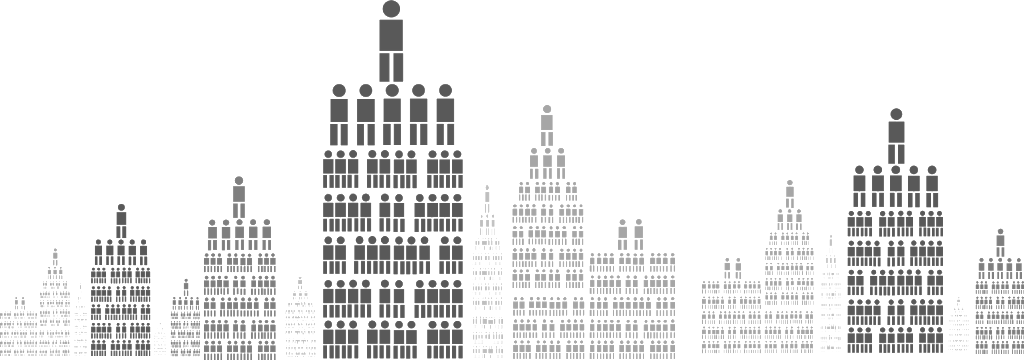Buildings are designed to withstand change; that’s their job.
Wind and rain, earthquake, lightning and terror attacks; buildings are made to resist them all in order to Stay Put, No Matter What.
The organisations inside these buildings often think in similarly architectural terms. They say things like ‘a company needs strong foundations to support the key pillars of its strategic framework which underpins all tiers and levels of the institution’.
(Interesting: that word institution describes both a building and the humans within it.)
Look any org chart; it’s a blueprint for a sturdy lattice structure that uses vertical and horizontal segmentation (called ‘hierarchies’ and ‘departments’) to provide strength and stability no matter which way the wind blows.

But what looks like a core strength is actually a critical weakness; organisational structures often block the sharing of ideas between minds; a brilliant concept on the 3rd floor will struggle to reach the technical expertise it needs on the 9th, let alone the financial backing it needs from the top.
Outside these structures, creative individuals collaborate on-line to connect problems with solutions, imagination with expertise and innovations with money to create smart, nimble enterprises that totally reinvent industries that once belonged to massive institutions.
Of the Fortune 500 companies of 1955, 88% have either since failed, collapsed or been sold off.
Built to withstand change, they became too rigid to embrace the possibility it offers.
Size, strength and stability are great if you’re a building. But within an organisation these qualities generate a rigidity that makes the business (and the individuals within it) extremely fragile in a period of dynamic change, like now.
Maybe it’s time to stop restructuring our institutions and start destructuring them.
Except the buildings.
They’re fine.
There are No Responses to this post. Jump In!